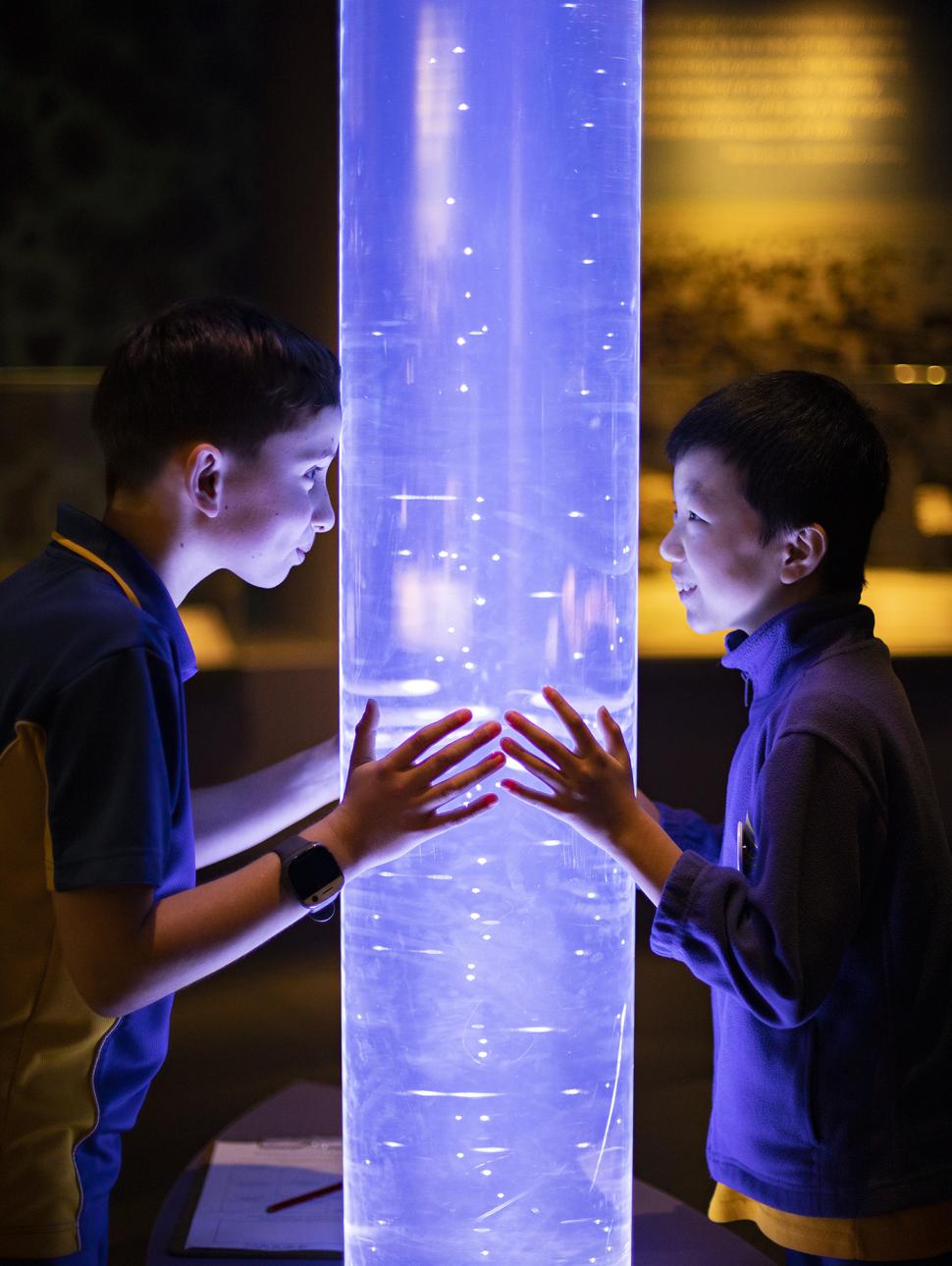
Wonderful Water
Dates
Weekdays during school term | 10am and 12.30pm
Curriculum
Geography | Earth and Space Science | Aboriginal Histories and Cultures
$280 per group (up to 32 students)
Bookings
Workshops available
Water isn’t just essential to life-it’s the lifeblood of our planet!
In Wonderful Water we’ll begin by taking a journey into space, where we’ll explore the view of Earth as the “Blue Planet” and learn why this unique perspective is so important. Once we land back on terra firma, we’ll dive into a hands-on scientific investigation to answer the question: Is all water the same?
Next, we’ll go fishing to catch local species and sort them by their natural watery habitats, all while learning the Nyoongar names for each one. Through the lens of Nyoongar culture, students will draw from the Dreaming story of the Waugal, the water serpent, and how it shaped the water sources we rely on today.
This program emphasizes the importance of caring for water and the land, inspiring students to think about sustainability and the shared responsibility of looking after Country.
Student experience
Students will:
- Take a journey through space and marvel at why Earth is called the “Blue Planet.”
- Experiment to explore whether all water is the same and what that means for life on Earth.
- Identify and sort species from different aquatic environments while learning their Nyoongar names.
- Relate the Dreaming story of the Waugal to the creation of local water sources.
- Visit the Changes Gallery to investigate how Aboriginal communities source and sustainably manage water.
Feedback
"Engaging facilitator for our pre primary’s today. The content and activities were age appropriate and the children had fun." Emily Kindy-Pre Primary Teacher.
" Excellent. Presenter was engaging, students didn't have to sit and listen for too long, students enjoyed the experiment." Carita Kindy-Pre Primary Teacher.
Skills development
This program links to the following strands of the Western Australian Curriculum:
Pre Primary
Biological Sciences.
Plants and animals have basic needs that are met by the places they live.
- The places plants and animals live include our homes and local areas, wetlands, forests, deserts and ocean.
- How connection to Country, roles and responsibilities to care for plants and animals are important to Aboriginal and Torres Strait Islander peoples.
HASS Geography
People live in places.
- The globe as a representation of the Earth on which Australia and other countries can be located.
- The places people live in and belong to, the reasons places are special or important to people and their significance to Aboriginal and Torres Strait Islander peoples.
Year 1
Biological Science
Plants and animals have external features that serve a purpose and by which they can be grouped
- the external features of animals can include eyes, body coverings, legs, wings, fins, antennae and claws
HASS Geography
Places have distinctive features.
How places change and how they can be cared for by different groups, including Aboriginal and Torres Strait Islander peoples.
- how places and locations are cared for and the community members responsible.
Year 2
Biological Sciences
Plants and animals have life cycles through which they grow, change and have offspring.
- how these stages of development are used by Aboriginal and Torres Strait Islander peoples to know when to harvest different foods, such as the Noongar people in the South-West of Western Australia use the flowering of Moodjar (Nuytsia floribunda) to signal the transition from Djilba to Kambaran.
HASS Geography
People are connected to many places
The ways in which Aboriginal and Torres Strait Islander peoples maintain connections to Country/Place, the names and meanings given to local features and places.
All facilitated workshops are led by the Museum’s experienced Learning and Engagement team and have been curated using the Museum’s unique resources to provide a deeper learning experience in our specialist subject areas.
Your booking for a facilitated workshop will include all materials and activities for the duration of the program with no prior preparation required.
As part of all facilitated workshop bookings, you are welcome to explore the rest of the Museum free of charge pre or post workshop and do not need to make any additional bookings to do so. WA Museum Boola Bardip is open daily from 9.30am to 5pm, with last entry at 4pm.